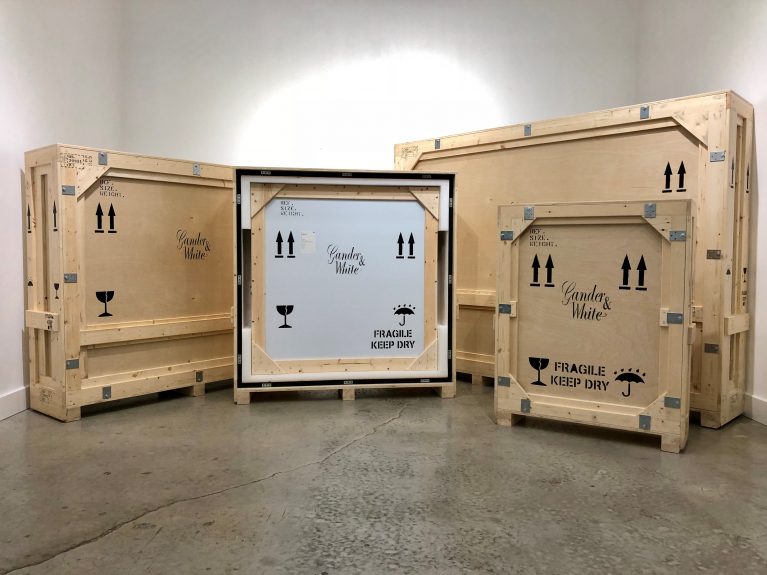Filter

Location
Job Type
Filter

Location
- New York, USA
Categories
- Notice
- Pinned


Wednesday 21st August 2019

When Walter Gander and Frank White came together in London in 1933 to form a fine art shipping company, do you think they ever thought that one day their company would have to be dealing with hurricanes, wildfires and earthquakes?
Because in 2019 we have to do exactly that. Since 2003 we have had permanent facilities in Florida, meaning our staff there have had to become adept at supporting clients dealing with tropical storms, cyclones and hurricanes. In 2011 we opened a permanent base in California, a state with high seismological activity and which is increasingly prone to wildfires.
Homes, offices and galleries in Florida and California tend to be built with the worst in mind, and our structures are no different. Whether purpose-built by us or ready-made, we ensure that our fine art facilities can withstand any threat to them. In California, our facilities are earthquake-resistant, each being built on a concrete slab and both compliant with local seismological building codes. In San Francisco, our facility is built into granite, meaning the likelihood of liquification of the ground in a seismic event is minimal. Our facilities in Palm Beach and Miami in Florida are similarly well-built, with storm protocols to shut down the facility in the event of a hurricane putting either facilities at risk.
In these natural disaster zones, we work with galleries, museums, interior designers and private clients to ensure their precious belongings are protected as much as possible from any harm that could come to them. From our facilities in both California and Florida, we have reacted swiftly to get out to areas to remove art and antiques as protective measures from dangerous natural events, ensuring at all times that we do not endanger the safety of our crews.
We can offer a white-glove service for pretty much any fine art request, even when it comes to hurricane preparation support in Florida. We can attend clients homes, offices and galleries to perform a full photo inventory of the art in their collection, then make recommendations to the collector as to which items should be transferred to our storage facilities before Hurricane Season based on size, handling challenges and ease of access.
At the heart of hurricane preparation is education, so it’s important for us to make sure our clients and their staff know how to handle, wrap and ultimately protect the items that are kept at their location during the season.
We operate short-term emergency services for some clients who are perceived to be more at risk once a hurricane has been forecast. Despite this, rushing the removal of a delicate artwork carries great risk of damage. We sometimes leave the threatened artwork in situ and build protective casing around it for its safety.
It’s probably no surprise that artwork is rarely made to withstand an earthquake. Placing artwork in a location prone to them of course carries risks, but we’re used to it! Our California branches are well-versed in seismic safety installation practices, such as florets for wall pieces, museum putty for three-dimensional objects on shelves or pedestals, and weighted pedestals. It’s like hanging artwork on a boat (which we’ve also done). The key is to ensure that the artwork is secured with extra precautions but to make these precautions invisible!
Working with the threat of natural events is part of what we do, but it must be stressed that we NEVER want our staff to be in harm’s way. While we respond to clients when they need us in times like this, we make it known to all our office staff and art technicians that their safety comes first – if they feel endangered or threatened then they must return to safety.